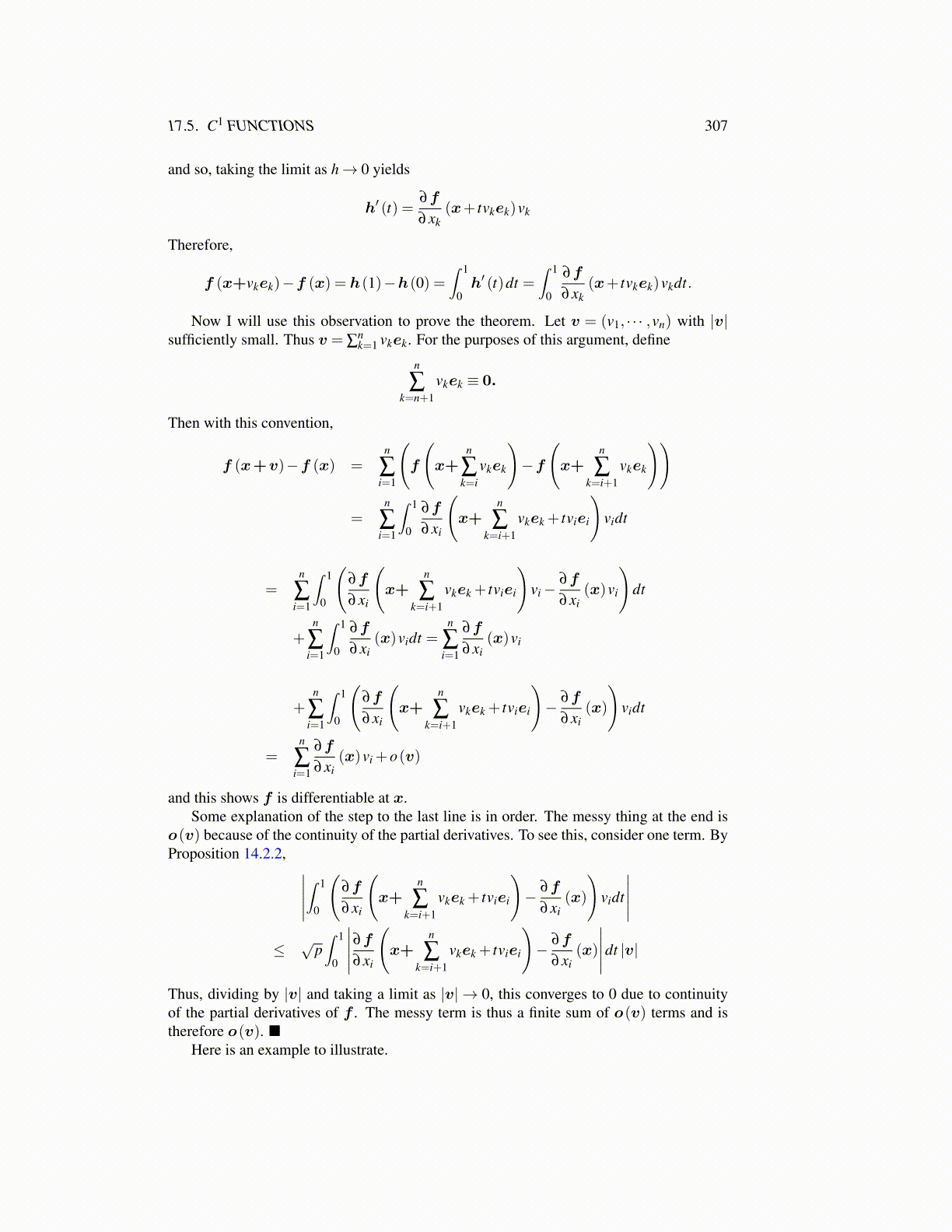
17.5. C1 FUNCTIONS 307
and so, taking the limit as h→ 0 yields
h′ (t) =∂f
∂xk(x+ tvkek)vk
Therefore,
f (x+vkek)−f (x) = h(1)−h(0) =∫ 1
0h′ (t)dt =
∫ 1
0
∂f
∂xk(x+ tvkek)vkdt.
Now I will use this observation to prove the theorem. Let v = (v1, · · · ,vn) with |v|sufficiently small. Thus v = ∑
nk=1 vkek. For the purposes of this argument, define
n
∑k=n+1
vkek ≡ 0.
Then with this convention,
f (x+v)−f (x) =n
∑i=1
(f
(x+
n
∑k=i
vkek
)−f
(x+
n
∑k=i+1
vkek
))
=n
∑i=1
∫ 1
0
∂f
∂xi
(x+
n
∑k=i+1
vkek + tviei
)vidt
=n
∑i=1
∫ 1
0
(∂f
∂xi
(x+
n
∑k=i+1
vkek + tviei
)vi−
∂f
∂xi(x)vi
)dt
+n
∑i=1
∫ 1
0
∂f
∂xi(x)vidt =
n
∑i=1
∂f
∂xi(x)vi
+n
∑i=1
∫ 1
0
(∂f
∂xi
(x+
n
∑k=i+1
vkek + tviei
)− ∂f
∂xi(x)
)vidt
=n
∑i=1
∂f
∂xi(x)vi +o(v)
and this shows f is differentiable at x.Some explanation of the step to the last line is in order. The messy thing at the end is
o(v) because of the continuity of the partial derivatives. To see this, consider one term. ByProposition 14.2.2, ∣∣∣∣∣
∫ 1
0
(∂f
∂xi
(x+
n
∑k=i+1
vkek + tviei
)− ∂f
∂xi(x)
)vidt
∣∣∣∣∣≤ √
p∫ 1
0
∣∣∣∣∣∂f∂xi
(x+
n
∑k=i+1
vkek + tviei
)− ∂f
∂xi(x)
∣∣∣∣∣dt |v|
Thus, dividing by |v| and taking a limit as |v| → 0, this converges to 0 due to continuityof the partial derivatives of f . The messy term is thus a finite sum of o(v) terms and istherefore o(v). ■
Here is an example to illustrate.